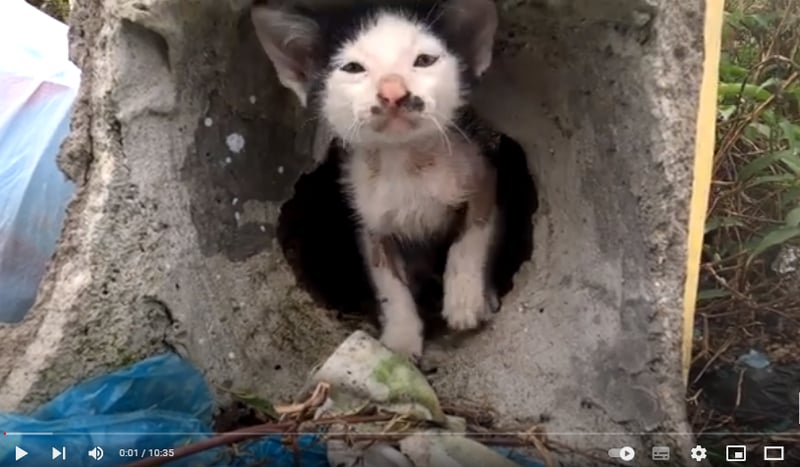
New report exposes dangerous fake animal rescues on social media
News
A new report released today has unveiled a growing and disturbing trend across social media platforms that involve fake animal rescue videos.
These videos, where animals are intentionally put in danger only to be "rescued" for likes, views, and financial gain, have been watched over 572 million times.
The report called Spot the Scam: Unmasking Fake Animal Rescues, was released by The Social Media Animal Cruelty Coalition (SMACC), a group of 26 animal protection organisations including World Animal Protection. It calls on social media companies to urgently address this type of content, which not only puts animals at risk but also undermines the work of legitimate rescue organisations.
Over a six-week investigation, SMACC uncovered more than 1,000 fake rescue videos on platforms such as Facebook, Instagram, YouTube, TikTok, and X. Meta’s platforms, Facebook and Instagram, hosted almost half of these videos, while YouTube and TikTok were also major hubs for the exploitative content.
Deliberate animal cruelty for profit
These videos typically show animals, often vulnerable ones like kittens, puppies, and primates, trapped or in distress, only to be dramatically rescued by the content creators. However, it’s become clear that the danger is staged, raising serious concerns about the fate of the animals involved.
In some cases, veterinarians have even suggested that animals may be drugged to make the scenes more dramatic. One particularly distressing example is a video showing a sedated mother cat while her kittens cry out. This video alone received over 136,000 views.
Alarmingly, some creators go even further, asking for donations from viewers under the guise of helping these animals. The funds raised could have supported legitimate animal welfare efforts but are instead being siphoned off by those staging cruel content for profit.

A disturbing breakdown of the findings
The findings from the SMACC report paint a dark picture:
- Cats were featured in 42% of fake rescue videos, followed by primates, dogs, snakes, and turtles.
- In several instances, animals are placed in life-threatening situations, such as being buried alive or left to narrowly escape predators.
- A niche subgenre involves fabricating parasite removal, with staged scenes prolonging the process for maximum engagement. In one instance, a 12-minute video showed a fake extraction of a snake from a monkey’s ear.
Even endangered species are being exploited. SMACC discovered multiple videos where vulnerable primates, including Long-tailed and Stump-tailed macaques, were used in fake rescues.
Loopholes in social media moderation
Despite platforms claiming to have policies against such content, SMACC’s report reveals that creators continually adapt to evade detection. Social media companies, the coalition says, are failing to keep up.
SMACC has outlined a series of indicators to help both the public and the platforms spot fake rescues. These include:
- The absence of any legitimate animal rescue organisation associated with the content
- Improbable scenarios purportedly caught on camera
- Multiple videos featuring similar settings or narratives
Tricia Croasdell, CEO of World Animal Protection, expressed concerns about the rise of this disturbing content:
“It is deeply concerning that in the pursuit of social media likes and shares for profit, some individuals deliberately engage in animal cruelty to deceive the public by staging fake 'rescues.’
“Animals, like humans, are sentient beings. They can feel emotions, form bonds, and suffer both physically and psychologically. When animals are manipulated or placed in harmful situations for the sake of dramatic social media content, their welfare is severely compromised.”
“The stress and trauma inflicted upon them can have lasting effects, manifesting in behaviours indicative of anxiety and distress, as well as physical injuries.”
“Social media platforms must do more to tackle, and identify, fake rescue content and remove it from their platforms, whilst the work of genuine animal rescue organizations should be protected and promoted on social media.”
By being vigilant and critical of the content we engage with online, we can help put an end to the exploitation of animals for entertainment.
SMACC also urges all viewers to exercise caution and apply the A.R.C. test— Authenticity, Reality Check, and Creation—when encountering rescue videos online.